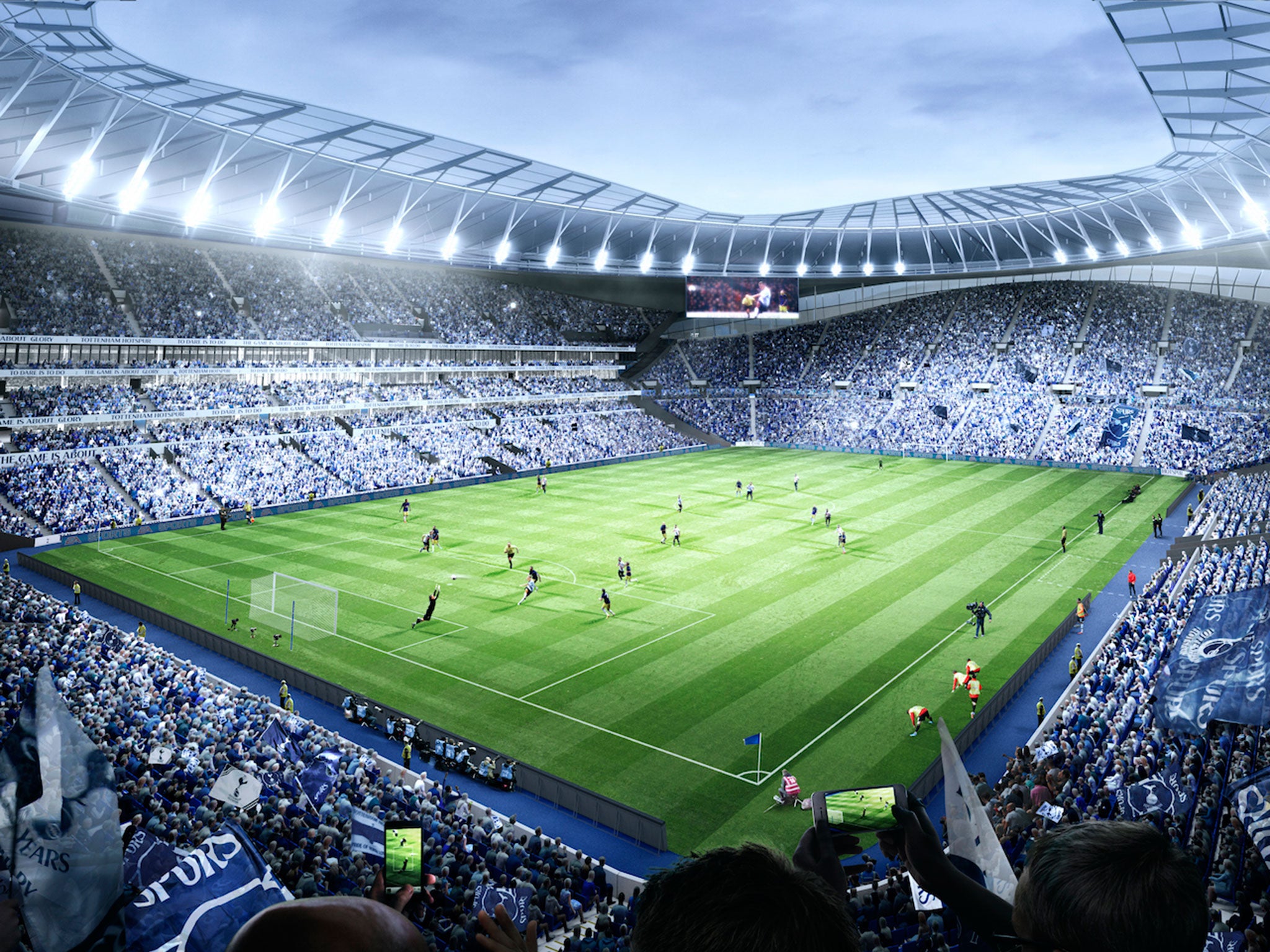Tottenham's new 61,000-seater stadium engineered to make chants sound louder than they actually are
The first pictures of the £750m stadium were released last week

Your support helps us to tell the story
From reproductive rights to climate change to Big Tech, The Independent is on the ground when the story is developing. Whether it's investigating the financials of Elon Musk's pro-Trump PAC or producing our latest documentary, 'The A Word', which shines a light on the American women fighting for reproductive rights, we know how important it is to parse out the facts from the messaging.
At such a critical moment in US history, we need reporters on the ground. Your donation allows us to keep sending journalists to speak to both sides of the story.
The Independent is trusted by Americans across the entire political spectrum. And unlike many other quality news outlets, we choose not to lock Americans out of our reporting and analysis with paywalls. We believe quality journalism should be available to everyone, paid for by those who can afford it.
Your support makes all the difference.Tottenham’s new 61,000-seater stadium has been designed to help Spurs fans generate more of an atmosphere by amplifying the sound of their chanting, say architectural firm Populous.
Spurs will move to the new venue, only a stone’s throw away from their current White Hart Lane home, for the 2018/19 season but will spend the 2017/18 campaign playing at Wembley.
Pictures of the £750m stadium, which comes complete with an in-house brewery, were released last week and show a ‘Tunnel Club’ which allows fans to dine while watching the players prepare for the game through a glass wall.
But in trying to recreate the atmosphere often achieved at White Hart Lane, ‘acousticians’ were enlisted, with Populous’ managing director claiming the stadium has been designed more like a concert hall than a football stadium, to create “more clean reverberation times” meaning chants last longer.
They also boosted the potential noise with a curvature of the stadium roof, and even the padding of seats.
“The studies we've done show when you start breaking up acoustics everyone gets out of sync so they stop singing,” said Christopher Lee in an interview with GQ.
“So once they create acoustics where they don't break down, the reverberation times are quicker, they last longer and get louder. The louder people get, the louder people around them get, and so the atmosphere and the noise builds.
“[We've even looked into] how much padding do we have in the seats, where do we have that padding in the seats, which also deals with acoustics.”
Join our commenting forum
Join thought-provoking conversations, follow other Independent readers and see their replies
Comments